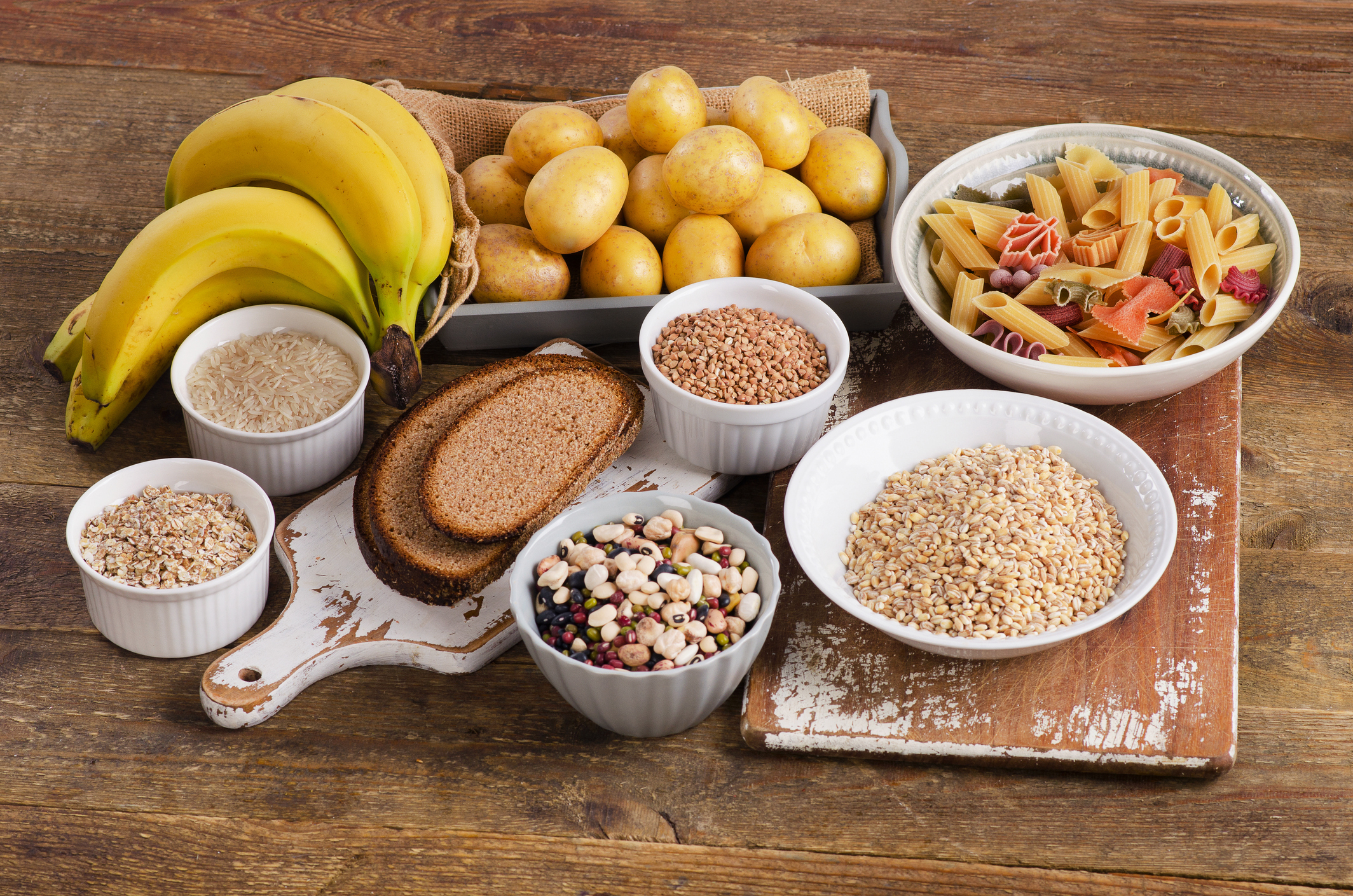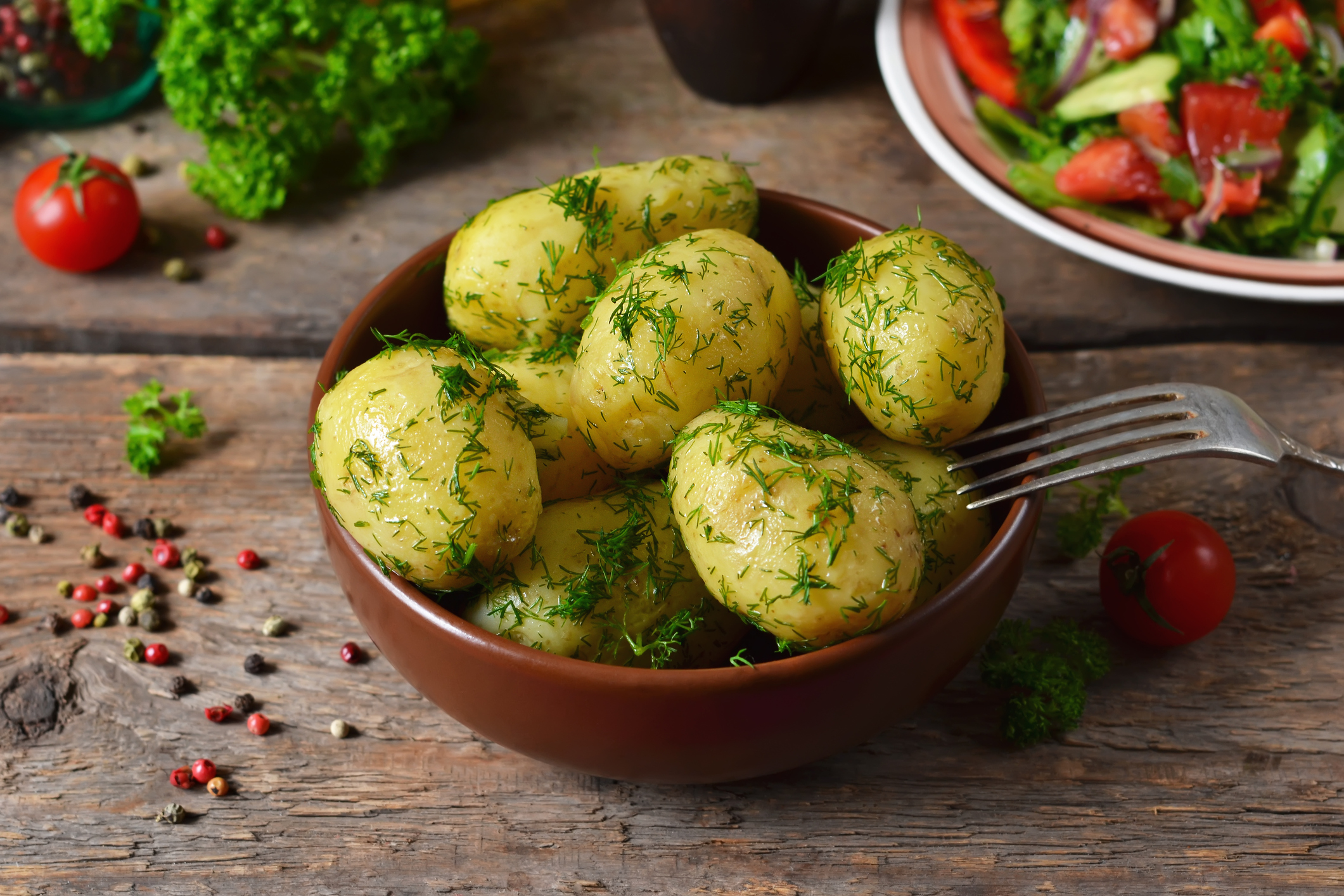The tides finally seem to be shifting in the Paleo community about the health benefits of a higher starch intake.
I personally have experienced the benefits of significantly increasing my dietary carbs and starches, and my clients have been enjoying the health effects of increasing their carbs as well.
But what happens if you feel like carbs and starches don’t work for you? Does that mean you have to follow a low carb diet?
In this article, I’ll explain the 5 different reasons why you might not be tolerating carbs or starch, and how you can modify your lifestyle in order to add them back in safely.
Are Carbs “Paleo”?
Personally I could care less if a food is considered “Paleo” but let’s examine the evidence.
There’s no significant evidence that humans are designed to thrive only on low carb diets. Carbohydrates, starches in particular, are a significant component of many traditional diets.
The Kitavan and Okinawan cultures thrive on high carb diets filled with starchy roots and tubers. These cultures experience low rates of obesity, metabolic disorders and inflammatory diseases. Some scientists even believe that the combination of starch and protein allowed for the development of bigger brains in humans.
Carbohydrates also support our gut health, contrary to some Paleo gurus’ beliefs. The soluble fiber and resistant starch in starchy foods are essential for feeding the good bacteria in our guts. According to Jeff Leach, an expert in the human microbiome, removing starch from your diet could even result in an unfavorable shift in gut bacteria.
Think carbs cause insulin resistance? Quite the opposite, actually. Recent evidence shows that eating high carb diets can actually assist in weight loss and improve insulin sensitivity.
Dr. Michael Eades describes the effect of carb intake on insulin sensitivity as a function of mitochondrial activity. And frankly, the overly simplified insulin-obesity hypothesis is flat out wrong.
Need help adding carbs back to your diet? Apply to work with me here!
The Genetics of Starch Tolerance
With these benefits in mind, does that mean everyone should adopt a high carb, high starch diet?
Not necessarily. Most healthy people tolerate safe starches well, but some individuals may experience blood sugar spikes after eating starchy foods.
Newer research is showing that certain people have a genetic inability to tolerate large amounts of starch. In these people, a low starch diet might be appropriate.
AMY1 is a gene responsible for producing salivary amylase, an enzyme that is essential for breakdown of starch during digestion. Every individual has a unique number of copies of the AMY1 gene. The variation between individuals is large, with certain studies showing the range is between 2 and 15 copies. More copies of the gene is correlated with a higher production of salivary amylase.
As you might expect, individuals whose heritage is from starch-rich cultural diets have higher copies of the AMY1 gene, while individuals whose heritage is from starch-poor cultures have low copies of the AMY1 gene. (Examples of a low-starch culture include Aboriginal Australians and the Inuit.)
Those with a low copy number seem to have a much harder time metabolizing starch, which can lead to obesity and insulin resistance. In fact, individuals with less than 4 copies of the AMY1 gene are eight times more likely to become obese than those with 9 or more copies of the gene. And each additional copy of the gene reduces the chance of obesity by 20%!
Perhaps the most interesting study on the effects of the AMY1 gene looked directly at how people with a low number of AMY1 copies metabolized starch, compared to individuals with a high number of AMY1 copies.
The researchers hypothesized that the low copy number group would have better glucose control than the high copy number group. They believed that the low amounts of amylase would delay glucose absorption and lead to a more controlled glucose response. To their surprise, the opposite seemed to occur.
The researchers ran two test on each of these groups. First, they measured the post meal blood glucose levels of the participants after drinking a starch solution. To the astonishment of the researchers, the Low AMY1ers had a significantly higher blood glucose response than the High AMY1ers.
Second, they measured the post meal blood glucose levels of the participants after drinking a glucose solution. There was no significant difference between the low AMY1 group and the high AMY1 group. The glycemic response seemed to be isolated to the starch solution in the low AMY1 group.
Unlike the scientist’s predictions, the low salivary amylase seemed to inhibit proper starch metabolism causing a glycemic response. This finding supports the role of AMY1 becoming a leading risk factor for obesity and diabetes.
Individuals with low AMY1 copies could modify their diet to reduce starch consumption for better glucose metabolism to feel their best and prevent disease. Unfortunately, people with diabetes are often prescribed a diet rich in whole grains, with little consideration of individual differences in genetic makeup and tolerance for starch.
The starch intolerance that can result from low salivary amylase highlights the problems with one-sized fits all diets.
OTHER FACTORS THAT AFFECT STARCH TOLERANCE
So, should we assume that everyone that has a blood sugar spike after eating a baked potato has low salivary amylase and should remove starch from their diet?
Not necessarily. A blood sugar spike from starches doesn’t always equal low amylase. The AMY1 gene is just one of many factors that could be effecting an individual’s ability to break down starch.
You should rule out other potential factors that could be causing blood sugar spikes before eliminating starch from your diet.
Below are some factors that should be considered when you are experiencing blood sugar swings after eating starches.
Preparation and Cooking Methods
In the Perfect Health Diet, Paul and Shou-Ching Jaminet provide simple preparations strategies that can greatly reduce risks of post meal spikes in blood sugar after eating starches.
Boiling instead of baking your starches can reduce the glycemic response to these foods. For instance, a boiled potato has a glycemic index of 50-60 compared to 100 of a baked potato.
Would you like to save this post?
Your email address is 100% safe and will never be sent spam.
Commercial prepared instant rices may also cause some problems since they are often cooked at high temperatures.
Pairing your starches with a little fat, protein, and fibrous vegetables can also delay the rate of glucose digestion. Acids like vinegar and lemon juice can also assist in reducing the glycemic index of foods.
Cooking and cooling starches in the fridge, then reheating them later, can also improve your blood sugar response to starches thanks to the formation of “resistant starch”. This type of starch is a prebiotic that feeds your beneficial flora, and lowers the overall glycemic index of those carb dense foods. Bonus: it helps build a healthier gut microbiome.
Sitting Less and Exercising More
Research has shown that exercise and movement can improve carbohydrate tolerance. A large meta-analysis showed an 8% decrease in HA1c (an indicator of long term glucose control) in type 2 diabetics after participating in an exercise program.
Both aerobic and resistance exercises have been shown to improve blood sugar control, but a combination of both reigns superior than each exercise type alone in reducing blood sugar levels.
And you don’t have to run marathons to have good blood sugar. Taking a 20 minute walk after a meal has been shown to significantly reduce postprandial blood sugar, and is incredibly simple to do.
If you’re not already strength training, you need to be. Research shows that resistance exercise not only reduces blood sugar in the moment, but also increases liver insulin sensitivity and reduces the insulin response to carbohydrate intake over time.
The more muscle tissue you have, the more storage for extra glucose your body has as well (in the form of muscle glycogen), which reduces the likelihood that extra carbohydrate intake will be stored as fat.
Structured exercise is important, but avoiding long periods of sitting could also be just as important in blood sugar regulation. A recent study showed that individuals who stood up and did a low to moderate level activity for two minutes three times every hour lowered their post-prandial blood sugar responses between 24-30%.
Avoiding sitting when you have a desk job can be more challenging, but this study shows that it doesn’t take much to experience positive results. Whether its getting up to do a few air squats or walking to the other side of the office, maintaining movement throughout the day is crucial for blood sugar regulation.
Gut bacteria and underlying infections
Gut bacteria may play a key role in individual differences in carbohydrate tolerance. A recent study indicates that individual differences in gut bacteria is a better indicator of glycemic responses to certain foods than the glycemic index. Specifically, Proteobacteria and Enterobacteriaceae were associated with poor glucose control.
Another study directly addressed gut bacteria and diabetes by transplanted healthy fecal microbiota from thin men into obese men with insulin resistance. The men who received the transplants had a significant increase in insulin sensitivity (glucose clearance increased from 26.2 to 45.3 μmol/kg/min).
The researchers hypothesized that the increase in insulin sensitivity was primarily caused by the increased butyrate production and diversity in the gut microbes following the transplant.
Endotoxins produced by the microbiota in the gut have been shown to drive insulin resistance. Butyrate is a short chain fatty acid produced by gut bacteria that has been shown to prevent the translocation of the endotoxins outside the gastrointestinal tract. Therefore, butyrate can provide protection against endotoxin induced blood sugar spikes.
Butyrate’s role in blood sugar regulation is especially important when determining whether you should eliminate starch. Resistant starch has a prebiotic action in the gut that increases butyrate production. So, if an individual has a bad microbial balance causing their blood sugar spikes, eliminating starchy foods could exacerbate the problem by further reducing butyrate production in the gut.
I would even argue that slowly increasing starch and prebiotic consumption could be therapeutic if your gut microbiome is out of balance.
Beyond general gut imbalance, certain pathogenic infections in the GI tract could result in insulin resistance. It’s hypothesized that the chronic inflammation caused by infections could lead to blood sugar issues. In fact, individuals infected with Helicobactor pylori, the bacteria that causes ulcers, have a 2.7 times increased risk of developing diabetes.
The bottom line is that an unhealthy gut could be at the root of an intolerance to starch. Focusing on balancing gut bacteria with probiotics and prebiotics could remedy blood sugar issues in many people.
Stress
The hormonal consequences of chronic stress can also influence a person’s ability to tolerate starch. When our body is stressed, it sounds the alarm to release cortisol into our blood stream. Cortisol prevents the cellular storage of glucose causing blood glucose levels to increase to provide the body with fuel for dealing with the perceived stress.
This fight-or-flight response is appropriate when you encounter an acute stressor such as a snarling wolf or when escaping a burning building, but problems occur when someone’s stressful job or relationships are causing chronic cortisol release.
If an individual is experiencing blood sugar swings and is constantly experiencing a tired and wired feeling, cortisol might be the root of the problem.
Finding ways to cope with stress is imperative in controlling blood sugar swings. Taking walks in the woods, practicing yoga, meditating, laughing with friends, praying, or even taking a moment to pet your dog are just a few of the great ways to reduce your cortisol levels.

Still struggling with starches?
If you have ruled out all these factors and are still experiencing blood sugar spikes after eating starches, you might not be genetically equipped to process starch. Individuals with a low number of AMY1 copies would probably feel best on a low starch diet.
However, just because you can’t eat starches, doesn’t mean you should avoid all carbohydrates entirely. Fruit, honey, and dairy products contain more simple sugars like fructose, lactose and sucrose, which are unaffected by the AMY1 gene. So this gene doesn’t indicate complete carb intolerance, just a lowered ability to process starches.
Perhaps the most important lesson we can learn from the discovery of the AMY1 gene is the importance of diet customization versus following a one-size-fits-all diet. What is healthy for one person may not be healthy for another.
Don’t let a Paleo guru tell you how many carbs we all should be eating. Find the right amount of carbs that works for you!
If you need help determining your ideal carbohydrate intake, consider working with me one-on-one.
Did you enjoy this article? Share it with someone to spread the knowledge!
This post may contain affiliate links. If you click on a link and make a purchase, I may receive a small commission.



+ show Comments
- Hide Comments
add a comment